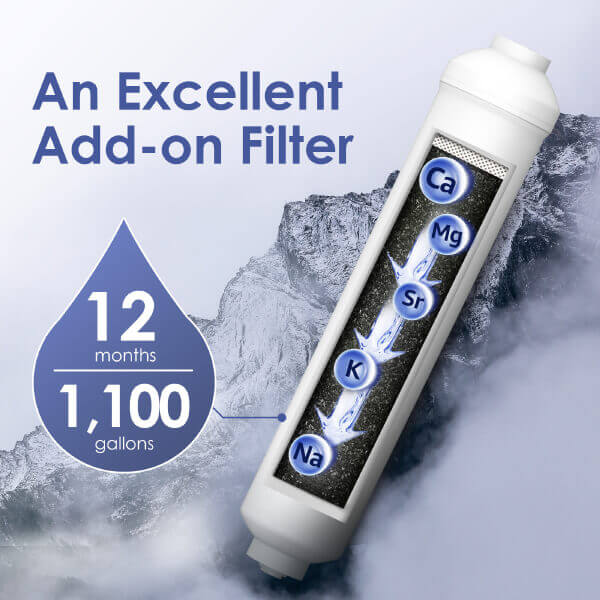what is the difference between Waterdrop and conventional RO systems?
What are reverse osmosis water systems?
Reverse osmosis (RO) is a water purification process in which a
partially permeable membrane is used to filter out contaminants from drinking water.
In reverse osmosis, the osmotic pressure is overcome with the help of a pressure, a colligative
Property that is determined by chemical potential differences of the solvent, a thermodynamic
Parameter, is conditioned. The result is that the dissolved substance on the side under pressure
the membrane and the pure water passes to the other side. In order to be "selective"
This membrane must not allow large molecules or ions to pass through the pores, but must
allow filtered pure water to pass through unhindered.
How does a reverse osmosis system work?
In a reverse osmosis system, sediments and chlorine are removed from the water with
a pre-filter before the water is pressed through a semi-permeable membrane to remove dissolved
After the water has left the reverse osmosis membrane, it is passed through a
post-filter to filter the drinking water before it reaches a tap.
Does the reverse osmosis water filter system produce waste water?
All RO systems produce concentrated water to remove impurities
Compared to conventional RO water purifiers, the Waterdrop RO system produces less
concentrated water and saves 300% more water. You can collect concentrated water to
Mopping the floor, washing your car, doing laundry, etc.
What harmful substances can the Waterdrop reverse osmosis water filter system remove?
The Waterdrop reverse osmosis water filter system uses a
advanced composite filter technology. Uses the properties of different filter materials
and combines them to achieve better filtration. The composite filter can
most harmful substances.
- TDS, chlorine, taste and odor.
- Harmful substances: Chromium (hexavalent), chromium, iron oxide.
- Heavy metals: lead, mercury, barium, copper, radium 226/228,
Aluminum.
- Microorganic pollutants
- Microorganic pollutants
- Organic pollutants
Does the Waterdrop Reverse Osmosis Water Filter System require electricity?
The reverse osmosis system has a pump that requires electricity to generate a
to ensure rapid water flow.
How do you install a reverse osmosis system?
Waterdrop RO systems are designed for self-installation. You can
Install the system in 30 minutes. Just read the user manual and the instructional videos,
or contact us by email, phone or live chat.
This video explains the installation of the Waterdrop RO system.
How often do I need to change the RO filter?
G3: The CF filter has a lifespan of 6 months, the CB filter a
lifespan of 1 year and the RO filter a lifespan of 2 years. The Waterdrop G3
Reverse osmosis system features a smart faucet and filter life indicators that let you
remind you to change the filter.
Does the reverse osmosis system make a loud noise?
The noise must not exceed 65 dB, which is
is perceived as pleasant (65 dB is tested under standard laboratory conditions, where the
Feed water pressure is between 14.5 psi and 87 psi. A loud noise can be caused by the following:
caused by:
a. The system is not installed on a level surface.
ensure that the system is installed evenly and without wobbling.
b. The system is placed against the cabinet. Do not place the system
against the case. The system may vibrate when it is operating.
c. The water pressure is unstable. Check and confirm that the
Water pressure is between 14.5 psi and 87 psi. The noise will be quieter when the water pressure is stable
is.
Has this reverse osmosis water system been certified by NSF?
Yes, our reverse osmosis system has been tested by NSF International and
certified. Here is the link for your reference.






























